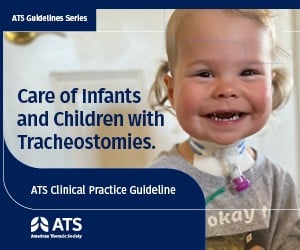New guidelines released by the American Thoracic Society (ATS) on October 22, 2025, aim to assist parents and caregivers in making informed decisions regarding tracheostomy placement for children. This clinical practice guideline is designed to provide clarity in a challenging area of pediatric care, ultimately leading to improved health outcomes for young patients.
Guideline Development and Purpose
A tracheostomy involves surgically inserting a tube through an incision in the neck into the windpipe, facilitating easier breathing. While this procedure can significantly improve the quality of life for some patients, it may not be beneficial for all. Dr. Christopher Baker, co-chair of the guideline committee and director of the Ventilator Care Program at Children’s Hospital Colorado, emphasized the emotional burden placed on families when deciding on such treatments. The guidelines seek to provide a structured approach for clinicians and families to navigate these complex decisions.
“A tracheostomy can save a life, lengthen a life, and improve the quality of life. However, this is not always true,” said Dr. Baker. “The decision to proceed with this intervention can be difficult for family caregivers. We wrote these guidelines to help clinicians and family caregivers provide the best care possible.”
One of the family representatives on the panel, Crystal Costante, highlighted the importance of these new guidelines for parents of children who require ventilator support. “The new guidance for clinicians gives me a sense of hope and relief. It recognizes the importance of including families as true partners in care,” Costante stated. She noted that better communication and shared understanding of tracheostomy care can enhance trust and improve overall outcomes.
Key Recommendations
The guideline was developed by an expert panel that included medical professionals and caregivers. They utilized the Grading of Recommendations, Assessment, Development and Evaluation (GRADE) framework to formulate their recommendations. Three significant recommendations from the guideline include:
“We recommend applying ethical principles (beneficence, nonmaleficence, autonomy, and justice) to guide shared decision-making about tracheostomy placement.”
This recommendation emphasizes the need for ethical considerations in the decision-making process, acknowledging the complexity of each individual case.
“We recommend that an awake and alert trained caregiver always be present with children at risk of immediate decompensation due to tracheostomy-related complications.”
This guidance aims to enhance safety for children who are vulnerable to potential complications related to their tracheostomy.
“For children with tracheostomies, we recommend performing a complete airway evaluation prior to a decannulation attempt.”
The evaluation should cover various anatomical areas, ensuring a thorough understanding of the child’s airway status before any procedural changes.
This publication marks the first time the ATS has released clinical practice guidelines specifically addressing tracheostomy care in children since stating its official position on the subject in 1999. The new guidelines provide a more rigorous scientific approach to care.
Implementation and Future Directions
While the guidelines aim to standardize care across different health settings, Dr. Baker acknowledged that some recommendations may pose challenges in resource-limited environments, such as rural areas or low- and middle-income countries. The ATS is currently exploring how these guidelines can be adapted for such settings through follow-up studies.
Since 2016, the ATS has published over 30 clinical practice guidelines on various respiratory conditions, including asthma and tuberculosis. These guidelines not only inform clinical practice but also serve as tools for healthcare providers to improve patient care.
The publication of these guidelines is expected to provide a foundation for better collaboration between healthcare providers and families, ensuring that critical decisions about tracheostomy care are made with the best possible outcomes in mind.







